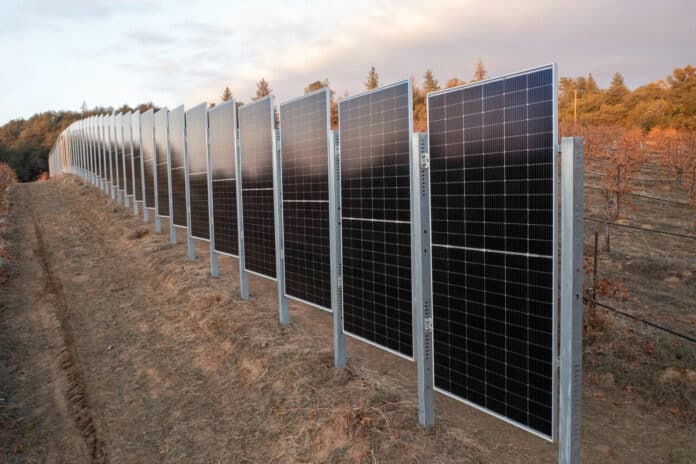The climate crisis is an immense challenge for agriculture. Crop failures due to increased and more frequent extreme weather events, heat, and lack of water are among these challenges in many regions.
In order to counteract the climate crisis, among other things, the power supply must be converted to completely renewable sources. However, concerns about installing solar on valuable agricultural land are common and often increase as the solar system’s footprint increases.
Now, a California-based in-ground solar system installer Sunstall has launched Sunzaun, a company that produces vertical solar systems for farms and agricultural environments. The systems can be used in existing fields and arable lands without sacrificing them for clean green energy.
Sunzaun’s vertical solar systems are designed for a concept called agrivoltaics, which combines agriculture and solar energy on the same land. Its installation is very similar to conventional solar systems, just that the system uses bifacial solar modules, and the entire array stands like a boundary wall in the field.
This saves land spaces and also provides clean energy and even potential water savings due to the shade created by the solar panels. Its minimalistic design uses holes in the module frames for a simple attachment to the piles without the need for a heavy racing system, while the bifacial modules themselves allow both sides of the panel to produce energy.
This vertical solar system can also be used for other purposes, like as city infrastructure along highways, next to railroads, and even as residential or public fences and whatever else you can think of.
The Sunzaun is designed to accommodate framed and unframed bifacial panels and to manage the wires in a safe and sound way. In addition, the systems are usable in slopes up to 15 degrees and can withstand up to 0.084 psi wind load. The company is now working towards UL 2703 certification, a safety standard for PV modules and panels.
In addition, Sunzaun’s design allows for easy adaptation to a change in panel size by adjusting the distance between each pile. It is also possible to adjust the height of the panels from the ground if needed.
The first Sunzaun installation in the United States is located on a vineyard in Somerset, California. It features 43 bifacial modules with a total power of 23 kW installed vertically and connected to a microinverter and two batteries. It follows the hilly area of the vineyard over 200 feet and supplies the farm with electricity, mainly in the morning and in the afternoon.
Besides providing shading, this vertical installation enables the farmer to move his harvesters next to the Sunzaun. Plus, they don’t need to bend down when harvesting next to the Sunzaun rows. In this way, winegrowing and the production of renewable energy increase the efficiency of land use, the company says.
